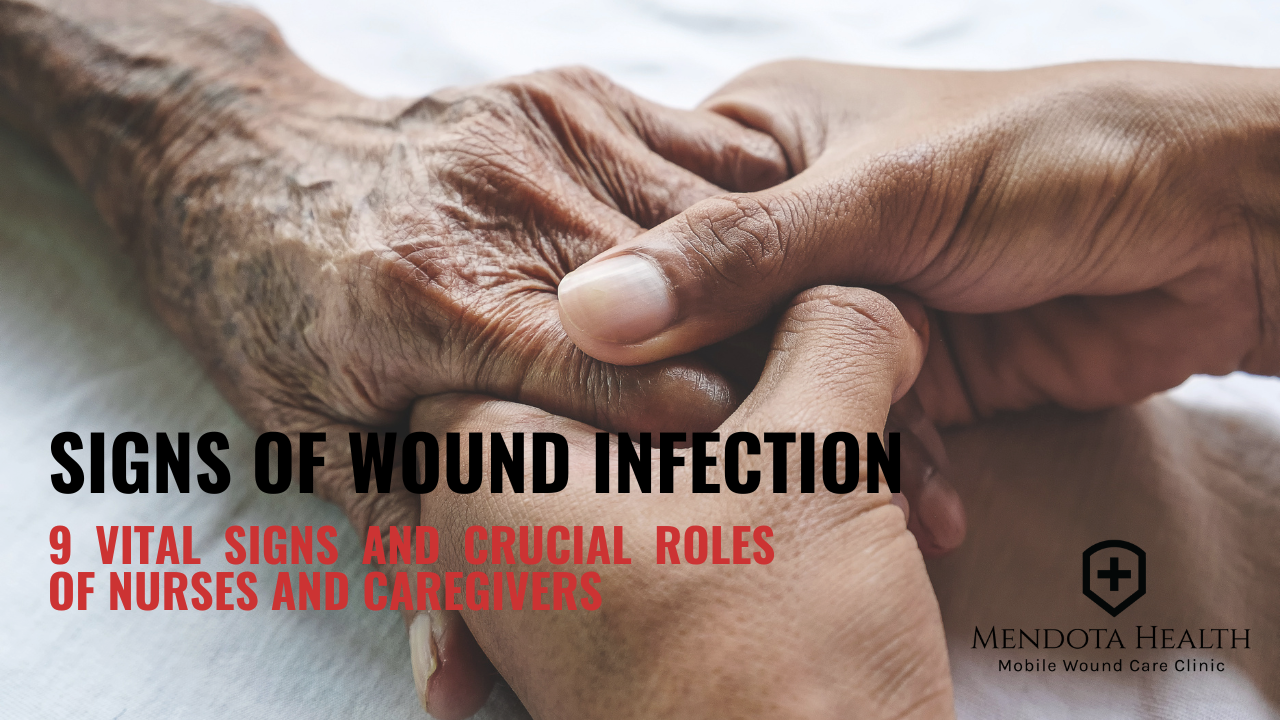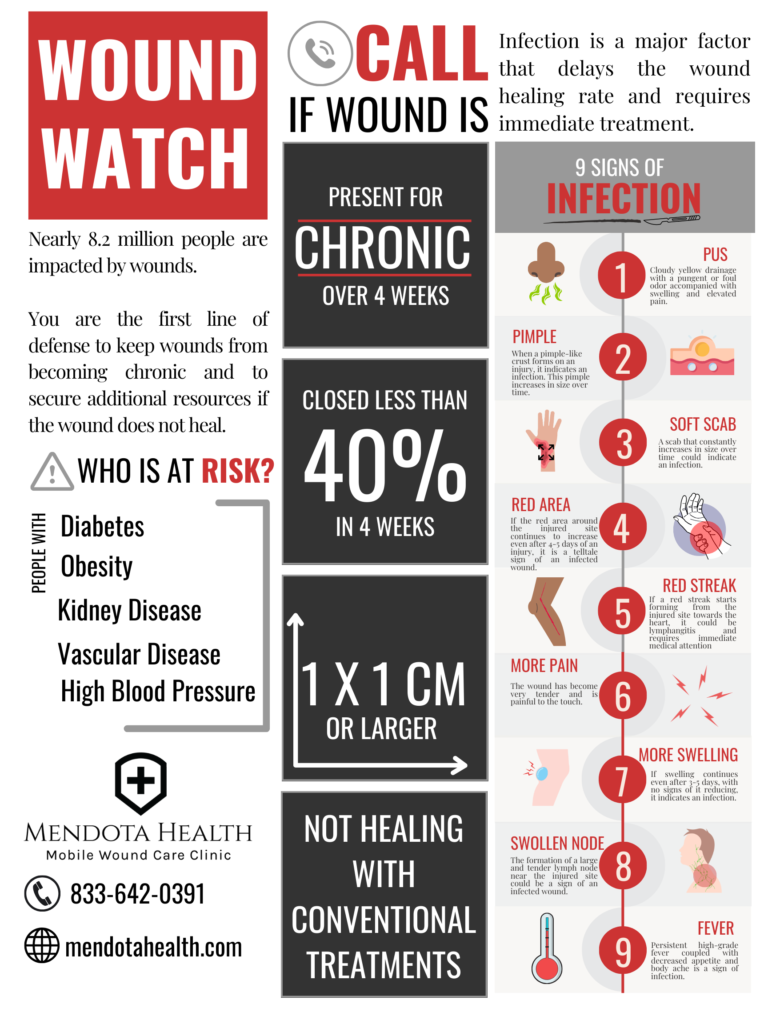
11 Sep Signs of Wound Infection
Wounds are a part of life, from minor cuts and scrapes to surgical incisions and more significant injuries. While our bodies are designed to heal wounds naturally, there’s always a risk of infection. When an infection takes hold in a wound, it can lead to severe complications, making early identification and treatment crucial. Nurses and caregivers, including family members, play vital roles in recognizing and managing infected wounds, preventing them from becoming chronic or life-threatening. There are nine key signs that a wound is infected and efforts of nurses and caregivers are the first line of defense in preventing and treating an infected wound.
How to Tell If a Wound Is Infected or Healing
signs of wound infection
- Pus: Pus is a clear indicator of infection. If you observe any white, yellow, or green discharge from the wound, it’s likely infected.
- Pimple-Like Bumps: The presence of pimple-like bumps near the wound is concerning and may indicate an infection.
- Soft, Soggy Scab: An infected wound may have a soft, soggy scab, as opposed to a dry and firm one seen in healthy healing wounds.
- Red Area: If the red area around the injured site continues to increase even after 4-5 days of an injury, it is a telltale sign of an infected wound.
- Persistent Redness and Increasing Red Streaks: If redness persists around the wound or if you notice red streaks extending from the wound site, infection may be spreading.
- Increased Pain: The wound has become very tender and is painful to the touch.
- Swelling: An infected wound often causes more intense or prolonged pain and increased swelling. Any noticeable changes in pain levels or swelling should be promptly reported.
- Swollen Lymph Nodes: An infected wound can lead to swollen lymph nodes in the nearby area. Look for lumps or tenderness in these nodes and inform healthcare professionals if found.
- Fever: A fever is a systemic symptom of infection. Monitoring the patient’s temperature is essential, and any fever should be promptly addressed.

recognizing a healing wound
- Gradual Reduction in Redness: A healing wound typically shows a gradual reduction in redness around the edges. Over time, the wound should appear less red and inflamed as the body’s natural healing process progresses.
- Formation of Scab or Crust: As a wound heals, a scab or crust often forms over it. This scab is a protective layer that shields the wound and helps prevent infection. Healthy scabs tend to be dry and firm.
- Decreased Pain: While some discomfort is expected during the initial stages of wound healing, pain should gradually decrease as the wound heals. Patients may notice less pain when touching or moving the wound area.
- Less Swelling: Swelling is a normal part of the healing process, but it should diminish over time. The wound site should gradually become less swollen and more defined.
conclusion
Nurses and caregivers, including family members, play pivotal roles in recognizing infection in wounds. By closely observing these nine signs and working collaboratively, they can help prevent infected wounds from becoming chronic or causing serious complications. Timely intervention is key to ensuring patients heal safely and efficiently.
Understanding the differences between a healing wound and an infected one empowers both healthcare professionals and caregivers to provide the best possible care. A healing wound should display gradual improvement in redness, the formation of a dry scab, reduced pain and swelling, while an infected wound often presents with pus, pimple-like bumps, a soft scab, and increased pain and swelling. Collaboration between nurses, caregivers, and healthcare professionals is essential to ensure wounds heal properly and infections are promptly treated.

